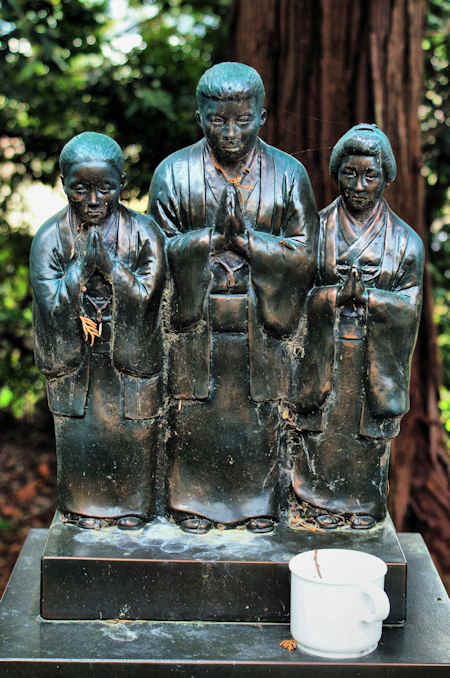Yakushi-do, temple 28 on the Shodoshima
Pilgrimage is located on the east coast and about halfway down the Mito peninsula that has the southernmost point of Shodoshima at its tip.
It is a fairly small, simple, and new structure that has been moved here fairly recently from higher up the slope. It is said that Crown Prince Taisho visited on his trip to the island in the first years of the twentieth century.
The new location is in front of an older cemetery and right next to the village shrine. It is unnamed with no information but the very small shimenawa is of a kind that still has the ears of rice attached to the ends of the straw.
I sit in the little covered rest area next to the Yakushido and drink a can of coffee from the vending machine while I ponder my route. The guide book I am using is written for car pilgrims and says to keep going south down the coast road and then cross over the peninsula at its narrowest part before heading up to the next temple.
Signs from the Yakushi-do point up through the village and I decide to follow them as my experience yesterday suggests that the walking path is quicker than the car route.
I switch back up through the village and take a path leading up the hillside. Once on top the path follows the narrow ridge before starting to descend down the other side.
I pass by a small altar and believe it to be the okunoin of temple 29.
A pair of dolls seem really creepy..... many Japanese I have spoken with seem very superstitious when it comes to old dolls.....
A little further and I come to temple 29 Kazaana-an. There are great views down the coast and across to Shikoku. I believe this is the southernmost point of the pilgrimage.
It is a modern building and well looked after.
I see a couple of young women heading down the stairs. These are the first other visitors to a temple I have seen since starting three days ago.
The honzon is a Jizo, though it, and several other statues, are locked away. A reclining Buddha covered in blankets is in front of the altar.
There is a small Inari shrine. Representations of Inari are either of a young maiden or an old man. This one is the latter.
As I reach the road below the temple a young pilgrim is parking his bicycle. Our paths will cross several more times today
































































